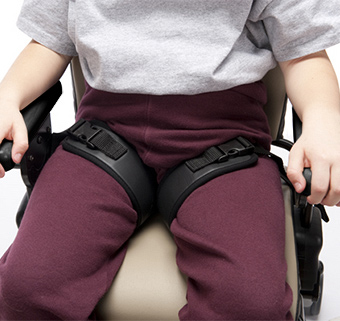Evidence Update: Dynamic Seating for Children with Autism
| May 2017 Teachers and therapists working in inclusive classrooms continue to work to improve academic outcomes for students with autism spectrum disorder (ASD). One fascinating area of inquiry is seating modification to improve in-seat performance, as students may need to sit for five hours during a normal school day. In one recent article on the topic, researchers examined how dynamic seating options affected classroom performance of 15 students with ASD.
Teachers and therapists working in inclusive classrooms continue to work to improve academic outcomes for students with autism spectrum disorder (ASD). One fascinating area of inquiry is seating modification to improve in-seat performance, as students may need to sit for five hours during a normal school day. In one recent article on the topic, researchers examined how dynamic seating options affected classroom performance of 15 students with ASD.
The study used video recording over the course of 9 weeks to compare the performance of preschool-aged children sitting on typical chairs with children sitting on therapy balls and Disc ‘O’ Sit air cushions. They assessed how the children “oriented” towards appropriate classroom activity (on-task behavior) and the amount of contact they maintained with the chair during classroom time (in-seat behavior) in each sitting condition.
Positive Changes with Dynamic Seating
Therapy balls combine a seating solution with a rocking and bouncing dynamic movement option. On the therapy ball, children with ASD select self-stimulatory behaviors to normalize arousal levels. This improves classroom performance, as an agitated child can relax by bouncing on the ball, thereby exhibiting fewer disruptive behaviors. In this study, the most significant finding was an 86.7% increase with in-seat behaviors when the students sat on the therapy balls as compared to typical chairs. Additionally 8 out of the 15 students improved with on-task behaviors while on the therapy balls.
Sitting on an air cushion however, produced no significant effect on in-seat behavior compared to typical chairs although sitting times did improve overall, and only 3 out of 15 students showed progress with on-task behaviors. This may be because a cushion, unlike a therapy ball, is a more stable surface requiring less muscle activity to maintain balance on the seat, so the child’s energy goes into other sensory seeking behaviors.
Teachers interviewed during this study use a combination of dynamic seating options in their classrooms, as each child requires tailored interventions and modifications for best classroom participation results.
Reference:
Matin Sadr N, Haghgoo H, Samadi SA, Rassafiani M, Bakhshi E, Hassanabadi H. The impact of dynamic seating on classroom behavior of students with autism spectrum disorder. Iran J Child Neurol. 2017;17(1):29-36




